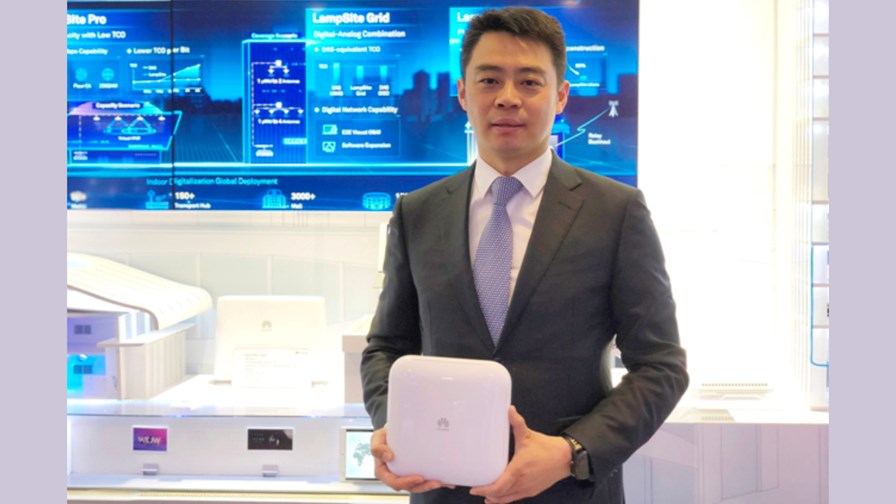
Ritchie Peng, President of Huawei's Small Cell Product Line © Huawei
- 5G LampSite supports both 5G and LTE
- Can be dropped into existing LTE LampSite deployments
- Indoor locations will contribute 70 per cent of new 5G services
- First indoor small cell to support 4T4R antenna arrays
Huawei has released its next generation small cell product, the 5G LampSite, which it says is the first multi-band indoor 5G small cell product to support both 5G NR and LTE. The 5G LampSite can utilize CAT-6A Ethernet or optical fibre cables laid out during 4G LampSite deployments to facilitate the transition to 5G without extra engineering implementation or changing radio network planning.
The vendor believes that when 5G becomes a reality, indoor locations will contribute up to 70 per cent of the new services, and that ubiquitous 100Mbit/s will be a prerequisite for indoor coverage. It cites forecasts claiming that the capacity density in indoor locations will increase by as much as eight times over the next five years, with higher bands such as C-Band and MIMO antenna technology playing a crucial role in improving the experience of indoor 5G users.
The 5G LampSite supports C-Band/sub-3GHz multiple bands, 4G/5G multiple modes, CAT-6A Ethernet/optical fibre multiple transmissions and eMBB, IoT and navigation services. It is also the first indoor small cell in the industry to support 4T4R antenna arrays.
“Our 4G LampSite has been broadly deployed to serve users in airports, shopping malls, and hotels around the world and has received high recognition from operators,” said Ritchie Peng, President of Huawei’s Small Cell Product Line. “Huawei is constantly innovating in the field of indoor coverage. The 5G LampSite supports ‘four multiples in one’ capabilities, which fully reflects the value of digital products and helps operators build indoor coverage in the 5G era more conveniently and efficiently."
He adds that traditional indoor coverage solutions are difficult to adapt to the needs of upcoming 5G networks. For example, with distributed antenna systems (DAS), signal attenuation is more severe in both air interface and through feeders on the high-band frequencies introduced to 5G. To use DAS in 5G, a large number of head ends need to be added and to support 4T4R, DAS requires three times as many feeders and other devices as the existing 1T1R systems. Huawei argues this is impractical and cannot guarantee stable and reliable network performance, hence the need for an alternative design.
Email Newsletters
Sign up to receive TelecomTV's top news and videos, plus exclusive subscriber-only content direct to your inbox.




